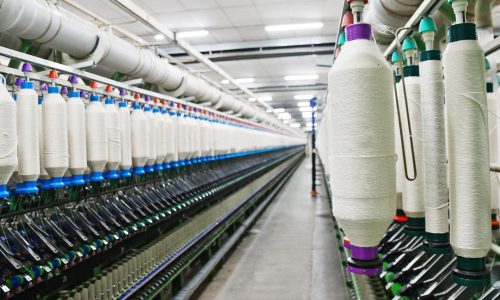Project Report For Spinning Mill
Introduction
Project Report for Spinning Mill is as follows.
India is a traditional textile manufacturer, with textiles and cotton being the key industries. India is surrounded by the world’s leading yarn and fabric producers, and its export dominance is expanding. The textile industry in India is one of the largest and oldest. India’s textile industry is self-sufficient and independent, with significant diversity and adaptability. There are two types of textile industries: structured mill sectors and unorganised decentralised sectors.
Mills are the centralised component of the textile industry. It could be a spinning or a composite mill. A composite mill is one that combines the spinning, weaving, and processing operations under one roof. Because the decentralised sector is primarily concerned in weaving, it is heavily reliant on the organised sector for yarn.
This decentralised industry is organised into three major segments: power looms, handlooms, and hosiery. In addition to the aforementioned, the decentralised sector includes ready-to-wear clothing, khadi, and carpet production businesses. The Indian textile sector has a significant economic impact on the country.

Processing Of Spinning Mill
CARDING :-The raw material is broken down into little pieces before being cleaned of contaminants such as garbage, dead fiber, dust, and dirt during the carding process. Following this cleaning procedure, the cleaned cotton is turned into sliver form. This sliver is saved and brought forward to the following segment in canes.
DRAWING :- Carding machines divide the raw material into a web of long fibres known as sliver. The procedure begins by removing slivers from the carding machine. The slivers are then sent to the drawing machines, where they are reprocessed to make them softer, straighter, and less variable by combining many canes of sliver into one row.
COMBERS :- It is a method of passing fibres through a sequence of rotating brushes. The brushes extract the shorter fibres while leaving the longer ones remain, which are then twisted into laps on bobbins. A comber is the most often used form of combing machine.
SIMPLEX :- The simplex frames pull the slivers out to make them thinner and longer before twisting them together to form roving.
RING :- The roving is then transferred to the spinning frames, where it is stretched out and twisted together even more tightly to form yarn. A spinning machine spins yarn into thread in the spinning mill process. The spinning machine is known as a ring frame, and it is made up of four parts: the spindle, the flyer, the bobbin, and the doffer.
Market Potential Of Spinning Mill
The Textile Yarn Market was valued at USD 11.99 billion in 2019 and is expected to be valued at USD 16.04 billion by 2027, increasing at a CAGR of 4.00% between 2020 and 2027.
India’s textile sector was valued at $150 billion US dollars in 2017. With a broad raw material base and industrial power, India’s textile industry is one of the largest in the world.
The textile industry accounts for 7% of total industry output, 2% of GDP in India, and 15% of export revenues. The textile industry is one of the country’s most important employment creators, employing over 45 million people directly.
Rapid urbanization and rising industry demands are the primary drivers driving market expansion. The movement in consumer preferences towards more affordable and comfortable clothing stimulates demand for high-value materials such as silk, viscose, and hemp. Because of the fundamental features of both artificial and natural yarn, blended types of fibres are also enjoying significant growth in the business, boosting international market expansion.
Increased demand for formal and casual clothes, as well as other attractive items, among all age groups in the global population, is a primary driver of textile market growth. Furthermore, rising populations and urbanisation in emerging nations such as India, Bangladesh, Vietnam, Brazil, and others are expected to drive demand for clothes and apparel, positively adding to market growth.
Project Report Sample On Spinning Mill
Need Help?
Create 100% Bankable Project Report

